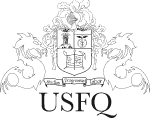http://repositorio.usfq.edu.ec/handle/23000/1022| Campo DC | Valor | Lengua/Idioma |
|---|---|---|
| dc.contributor.advisor | Neubauer, Renaud, dir. | - |
| dc.contributor.author | Vega Conejo, Claudia Cecilia | - |
| dc.date.accessioned | 2011-10-21T15:36:13Z | - |
| dc.date.available | 2011-10-21T15:36:13Z | - |
| dc.date.issued | 2009-08 | - |
| dc.identifier.citation | Tesis (Magíster en Filosofía China), Universidad San Francisco de Quito, Colegio de Posgrados; Quito, Ecuador; Agosto de 2009. | es_ES |
| dc.identifier.other | BQ 9262.9 .C5 V44 2009 | - |
| dc.identifier.uri | http://repositorio.usfq.edu.ec/handle/23000/1022 | - |
| dc.description | The purpose of this dissertation is to draw a comparison between Chinese and Indian idealism as they can be encountered in the life and teachings of these two great masters, Ramana Mahārshi and Xūyun Laoheshang. This work first pretends to investigate briefly the concept of the Absolute in the Advaita-Vedānta philosophy: the author reviews the ten Vedic Upanishads, examines the writings by Shankarācharya and the practice of “Mahāvākhya” (the Great Vedic Formulas), and investigates the teachings of Ātmavichāra. Secondly, this work explores the antecedents of hùatóu, practice in the frame of Chan Buddhism. And then the author studies two contemporary masters: Ramana Mahārshi and Xūyun Laoheshang, each representative of the two most prominent spiritual traditions in India and China respectively. | es_ES |
| dc.description.abstract | El propósito de esta tesis es realizar una comparación entre el idealismo de la China e India tal como se puede encontrar en la vida y enseñanzas de dos grandes maestros, Ramana Mahārshi y Xūyún Laōháshang. En primer lugar se pretende investigar brevemente el concepto de Absoluto en la filosofía Advaita-Vedānta: el autor revisa las diez Upanishads Védicas, examina los escritos de Shankarācharya y la práctica de los “Mahāvākhya” (Las Grandes Fórmulas Védicas), e investiga las enseñanzas del Ātmavichāra. En segundo lugar, este trabajo explora los antecedentes del hùatóu, práctica en el contexto del Buddhismo Chán. Entonces, el autor estudia a dos maestros contemporáneos: Ramana Maharshi y Xūyún Laōhéshang, cada uno representante de las dos tradiciones espirituales más importantes de la India y China respectivamente. | es_ES |
| dc.format.extent | viii,118 h. | es_ES |
| dc.language.iso | esp | es_ES |
| dc.publisher | Quito: USFQ, 2009 | es_ES |
| dc.rights | openAccess | es_ES |
| dc.rights | Atribución-NoComercial-SinDerivadas 3.0 Ecuador | * |
| dc.rights.uri | http://creativecommons.org/licenses/by-nc-nd/3.0/ec/ | * |
| dc.subject | Budismo Zen | es_ES |
| dc.subject | Meditación | es_ES |
| dc.subject | Filosofía china | es_ES |
| dc.subject.other | Religión | es_ES |
| dc.subject.other | Budismo | es_ES |
| dc.title | The Search for the Essence of Being according to Advaita-Vedanta and Chán Buddhism | es_ES |
| dc.type | bachelorThesis | es_ES |
| Aparece en las colecciones: | Tesis - Maestría en Filosofía China | |
| Fichero | Descripción | Tamaño | Formato | |
|---|---|---|---|---|
| 93539.pdf | TESIS A TEXTO COMPLETO | 949.46 kB | Adobe PDF |  Visualizar/Abrir |
Este ítem está sujeto a una licencia Creative Commons Licencia Creative Commons


